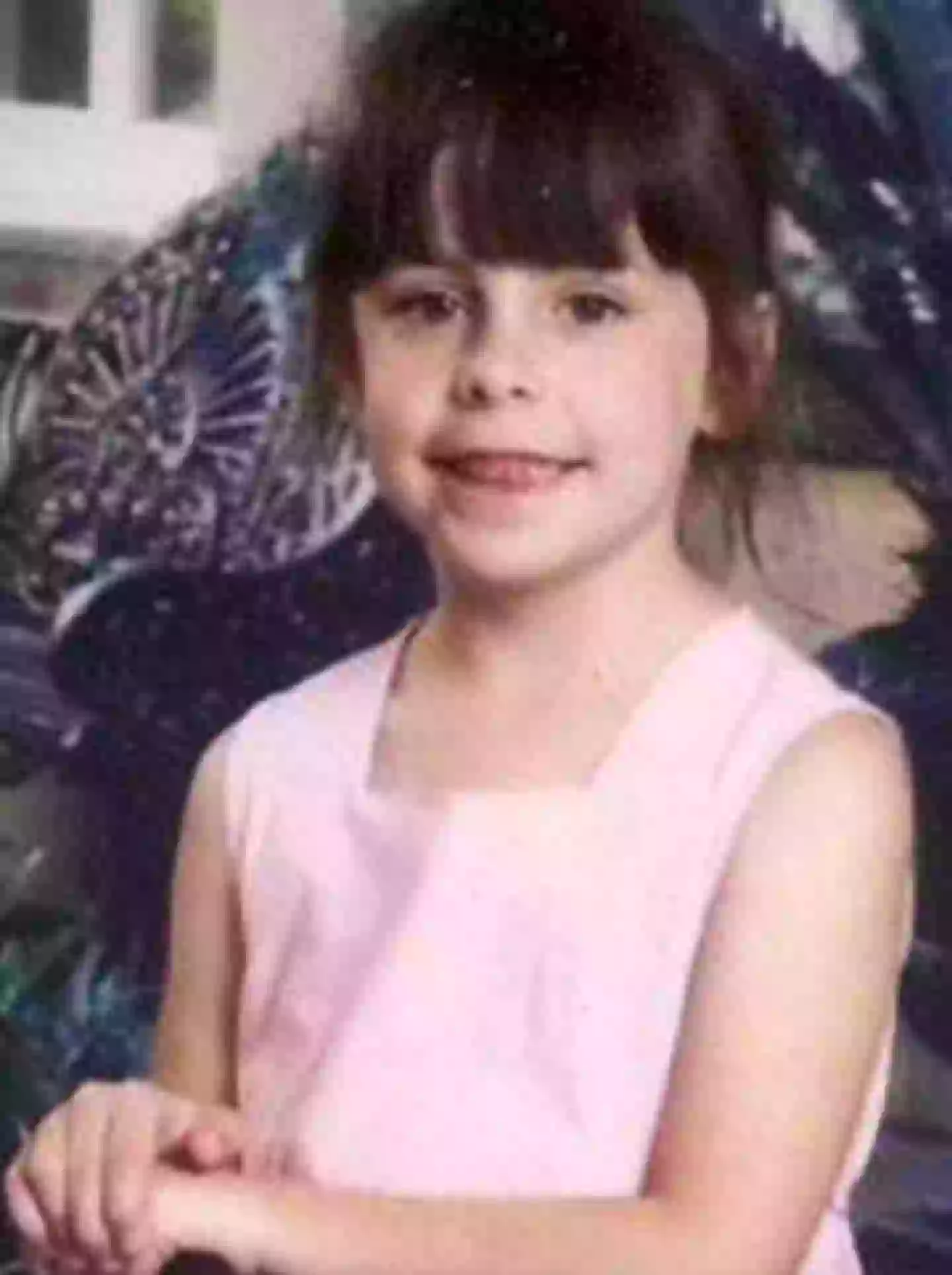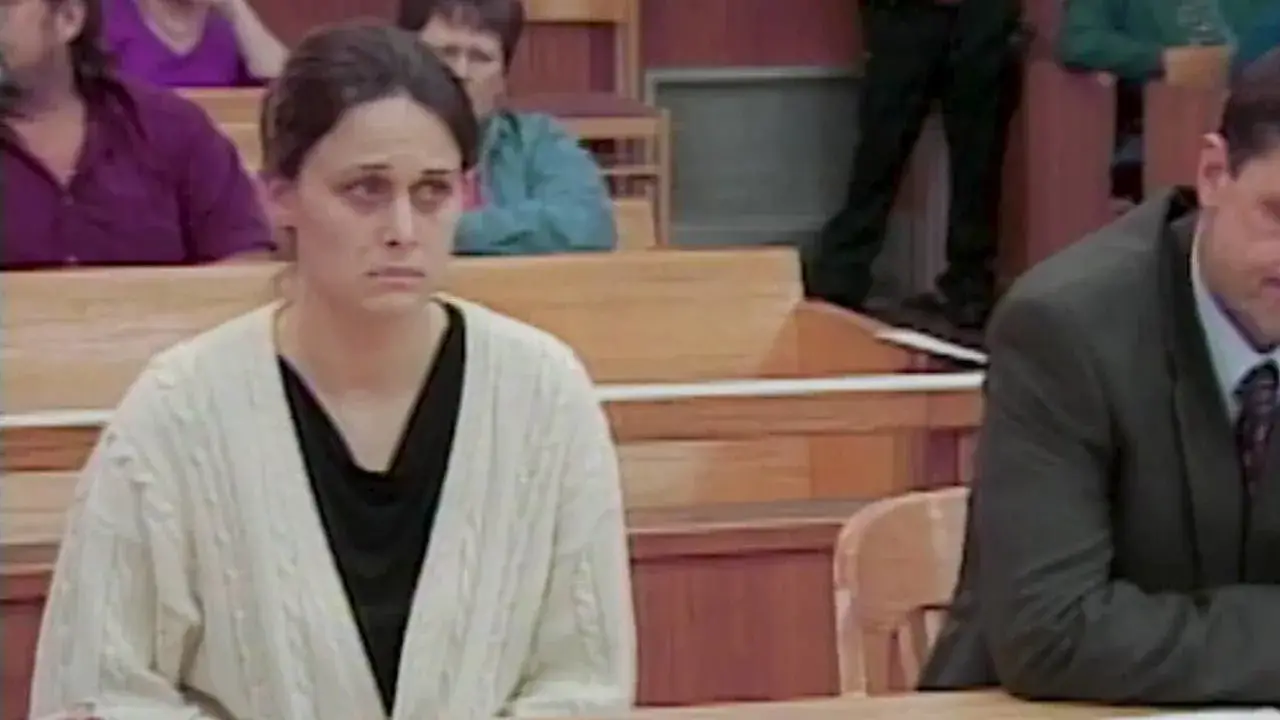Please note: This article contains sensitive content regarding child abuse and may be distressing for some readers.
Courtroom Testimony and a Mother’s Conviction: The Heartbreaking Case Involving Amanda Lewis
In a case that has shocked communities and raised profound questions about the impact of abuse on vulnerable children, Amanda Lewis faced trial in February 2008 on charges of first-degree murder and aggravated child abuse. The case centers on the tragic death of her daughter, Adrianna Elaine Hutto, who was found unresponsive in the family home’s pool in Florida. While authorities initially considered the drowning an accident, testimony given by Lewis’s then-seven-year-old son, AJ Hutto, completely transformed the investigation and subsequent trial.
A Tragic Incident and the Unfolding Investigation
On the day of the incident, emergency services were called to the residence after Amanda Lewis reported discovering her daughter unresponsive. According to the recorded phone call, Lewis claimed to have found Adrianna not breathing. Despite prompt efforts by paramedics and her subsequent transfer to Bay Medical Hospital, Adrianna was pronounced dead just an hour later. What initially appeared to be a heartbreaking accident soon took a darker turn when new evidence emerged during the investigation.

The pivotal moment in the case came when young AJ Hutto was brought in as a witness. Despite his tender age, AJ provided a detailed account that implicated his mother in the tragic death of his sister. In a recorded interview with law enforcement, the boy stated that he had witnessed his mother “dunk” his sister into the pool after she had misbehaved. His statement, delivered in simple and clear language, marked a turning point in the investigation and ultimately shifted the narrative from a presumed accidental drowning to a case of intentional harm.
The Courtroom Testimony of a Young Witness
During the trial, AJ Hutto was called to testify against his mother. The courtroom atmosphere was tense as the young boy, barely seven years old at the time, was required to answer challenging questions regarding the events he witnessed. Despite the inherent difficulties of testifying at such a tender age, AJ recounted his observations “word for word,” as he later explained. His testimony was raw and unfiltered, drawing a stark picture of the events that had led to his sister’s death.
AJ’s testimony was both harrowing and heartbreaking. When questioned by the prosecution about whether his sister was truly dead, the boy hesitated before providing a definitive “yes.” The lawyers then pressed him to describe how his sister died, and he responded with a chilling clarity that his “momma killed his sister.” His simple drawing, which depicted stick figures around a pool with one figure’s head being pushed underwater by another, underscored the gravity of his account.
Throughout his time on the stand, AJ became visibly emotional. At several points during his testimony, the young witness broke into tears, his distress evident as he recalled the events. His reaction was not only a reflection of the trauma he had endured but also an unmistakable signal of the pain and betrayal he felt. In a courtroom already heavy with sorrow, his tears lent a palpable intensity to the proceedings, emphasizing the human cost of the events under scrutiny.
The Mother’s Reaction and the Courtroom Drama
As the trial progressed, the focus shifted to the moment when the verdict was delivered. Amanda Lewis, who had maintained her innocence throughout the proceedings, was subjected to the weight of the jury’s decision. The courtroom was silent as the foreperson was asked to reveal the verdict. According to recordings from the trial, Lewis appeared deeply concerned, her eyes fixed ahead as she awaited the outcome. As the foreperson read the verdict—“guilty as charged” on both counts—Lewis’s reaction was captured on camera. In a scene marked by profound despair, her head drooped, and she began to cry as the second charge was read aloud.
The visual of Amanda Lewis’s breakdown in the courtroom resonated powerfully with many who witnessed it, illustrating the immense emotional toll of the verdict. The reaction was not isolated; members of the public in the gallery were also seen shedding tears, underscoring the collective impact of the case. Ultimately, Lewis was sentenced to life in prison with an additional 30 years imposed for the aggravated child abuse charges—a sentence that reflected the severity of the crime and the overwhelming evidence presented during the trial.
Post-Trial Reflections and Ongoing Controversy
In the years following the verdict, the case continued to generate heated discussions and controversy. Amanda Lewis, through various interviews and media appearances, has consistently maintained her innocence. In the 2016 series Killer Women, she expressed her desire to prove that “what he [AJ] said I didn’t do.” Despite the overwhelming evidence and the weight of the judicial process, Lewis’s assertions of innocence have remained a point of contention among family members and legal experts.
Family members of the Hutto household have speculated that AJ may have been coached to testify against his mother—a claim that AJ himself has repeatedly denied. Now 24 years old and living under a different name, he has categorically stated that his testimony was an accurate and unfiltered account of what he witnessed. In interviews, AJ has reiterated, “I just told them exactly what I saw word for word,” emphasizing his commitment to conveying the truth despite the personal anguish it caused him.
Reflecting on his childhood and the events of that fateful day, AJ has described his experiences as a mixture of heartbreak and relief. On one hand, he was devastated by the loss of his sister and the betrayal he perceived in his mother’s actions; on the other, there was a sense of catharsis in finally seeing the truth come to light. He has openly spoken about the lasting trauma he experienced, recounting a childhood filled with “darkness, trauma, and a lot of abuse.” His recollections paint a picture of a life marked by violence and suffering—an environment that was starkly different from the one experienced by his adoptive family, which he described as being “night and day” in comparison.
The Broader Impact and Community Response
The case of Amanda Lewis has not only stirred intense emotions in those directly involved but has also prompted a broader dialogue about child abuse, the reliability of testimony from young witnesses, and the long-term psychological impact of such traumatic events on children. Advocacy groups and professionals have noted that cases like this highlight the urgent need for robust support systems for children who witness or experience abuse.
Organizations such as the NSPCC and Childline have been at the forefront of providing confidential assistance to individuals affected by these issues. For those in need, the NSPCC can be reached at 0808 800 5000 (Monday to Friday, 10am-8pm), while children seeking immediate help can call Childline at 0800 1111, available 24/7. The ongoing conversation about these topics is critical to ensuring that affected individuals receive the support and resources they need to heal and rebuild their lives.
Reflections on the Legal and Social Implications
The Amanda Lewis case serves as a stark reminder of the complexities inherent in cases of child abuse and domestic violence. The legal proceedings, while necessary to deliver justice, have also exposed the deeply personal and emotional wounds that such cases inflict on families. The courtroom becomes not just a space for legal determination but also a stage for the raw human drama of pain, betrayal, and ultimately, the search for truth.
For legal professionals and social workers alike, the case underscores the delicate balance required when handling testimonies from very young witnesses. It raises important questions about how to protect children from further harm while ensuring that their voices are heard. The testimony of AJ Hutto, delivered under immense duress and emotional strain, stands as both a powerful piece of evidence and a poignant testament to the vulnerability of youth in the face of abuse.
The Legacy of a Tragic Case
In the years since the verdict, the story of Amanda Lewis and her daughter Adrianna Elaine Hutto has continued to resonate with many. For some, it is a painful reminder of the darker aspects of human behavior and the consequences of unchecked abuse. For others, it serves as a call to action—a plea for better systems to protect children and support families in crisis.
Amanda Lewis’s unwavering insistence on her innocence, despite the overwhelming evidence against her, adds another layer of complexity to the narrative. Her case has sparked debates about the nature of truth, the reliability of young witnesses, and the long-lasting effects of trauma on those who are forced to grow up too quickly. While the legal verdict is final, the emotional and social ramifications of the case continue to influence discussions about child welfare and judicial processes.
Moving Forward: Healing and Support
As society grapples with the legacy of cases like this, the focus must also turn to healing—both for the individuals directly affected and for the broader community. For survivors of abuse, access to mental health services, counseling, and supportive networks is essential in the journey toward recovery. Similarly, families who have experienced such profound loss need compassionate care and a space to rebuild their lives without the weight of unresolved trauma.
The Amanda Lewis case is a somber reminder of the importance of vigilance in protecting our most vulnerable. It highlights the need for comprehensive measures to ensure that children are safe and that their voices are heard without being manipulated or exploited. In this regard, community support organizations and legal reforms play a crucial role in fostering an environment where justice is not only served but also accompanied by empathy and understanding.
Conclusion
The heartbreaking testimony of AJ Hutto and the subsequent conviction of Amanda Lewis represent a complex intersection of personal tragedy, legal accountability, and the enduring struggle for truth in the face of abuse. The case has left an indelible mark on those involved, as well as on the broader public, reminding us all of the devastating impact that domestic abuse and neglect can have on innocent lives.
As we continue to reflect on this tragic case, it is crucial that we also recognize the need for better support systems and more robust legal protections for children and vulnerable family members. The conversations sparked by this case are a vital part of a larger dialogue aimed at preventing such tragedies in the future.
Check the video below for more insights into this deeply affecting case.

Adrian Hawthorne is a celebrated author and dedicated archivist who finds inspiration in the hidden stories of the past. Educated at Oxford, he now works at the National Archives, where preserving history fuels his evocative writing. Balancing archival precision with creative storytelling, Adrian founded the Hawthorne Institute of Literary Arts to mentor emerging writers and honor the timeless art of narrative.

